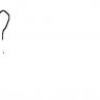 11
11his is due to the stronger nature of C=C compared to C-C
u must remember that there is restriction in the rotation across the C=C die to its small size ,strength and hindrance
But in C-C the restriction is not there due to the longer and less steric hindrance
Restriction is only possible i single bonds but not in double and triple bonds
That is the reason y u have diff type of isomers (geometrical......)by double bond
But in case of single bond there r only conformers[1]
 11
11it was not the answer to ur question but was the required facts to complete the above ques
every was told in general
C-O bond is also single
read the above carefully
i hope it could sought out ur problem[1]
 1
1BUT CAN U EXPLAIN...DA WHOLE THING?pl giv a detailed explanation
 1
1the thing is
when C-0 bond breaks , it follows S2N pathway (why ?)
and when O-R bond breaks , it prefers S1N pathway (why ?)
just think on this ..and have ur answer !
 1
1in PCl3 what happens is that it forms complex RPOCl2 AND it forms RCl as POCl2- is a good leaving group
( this complex is formed after PCl2 replaces H attached to O ..... the H then combines with Cl to form HCl (by product)
in SOCl2 i think we need a diagram ....coz when the SO2 escapes, Cl will be present on the same side and the retention takes place
need diagram ?
 1
1thanks a lot yaar...got it now...

